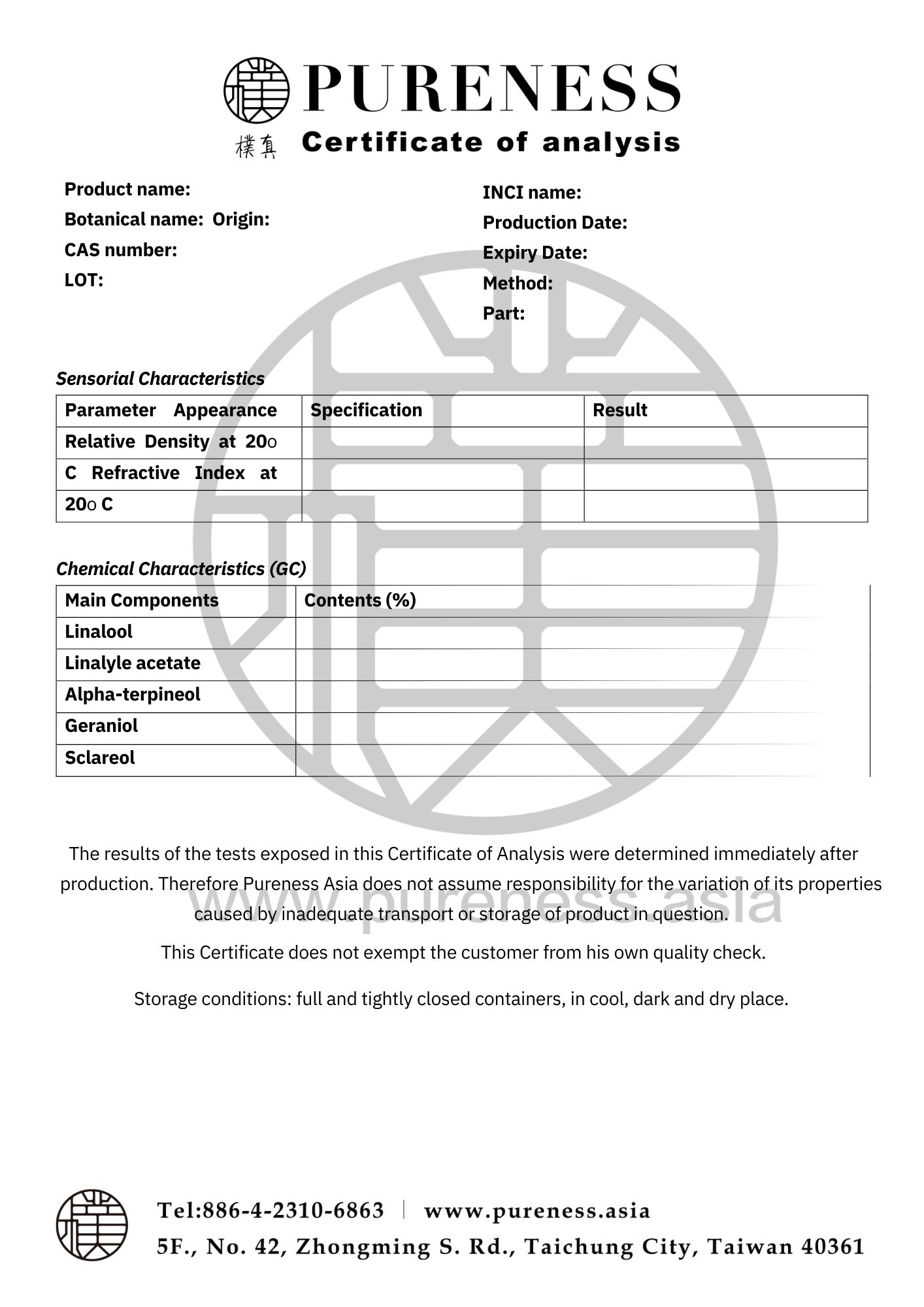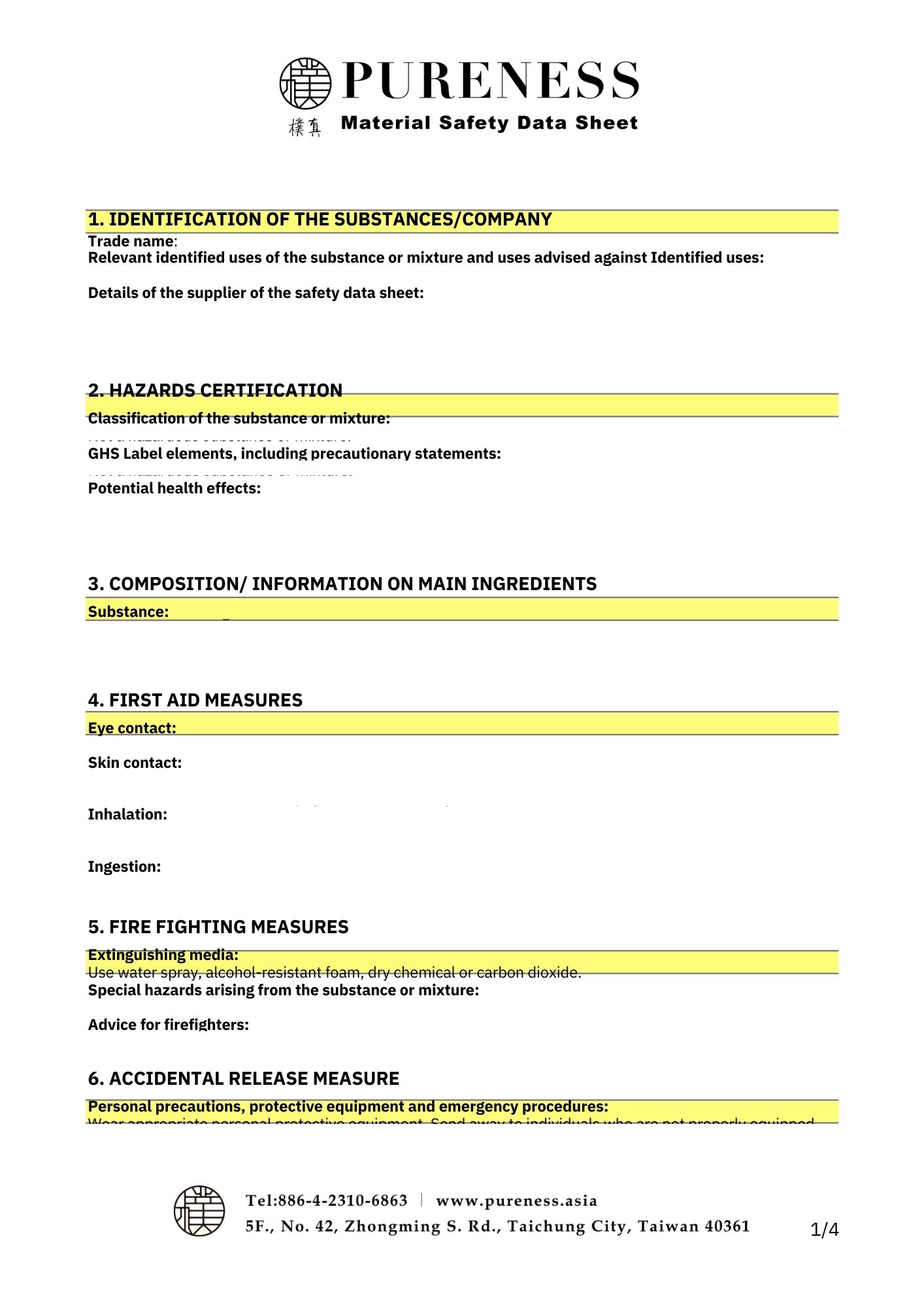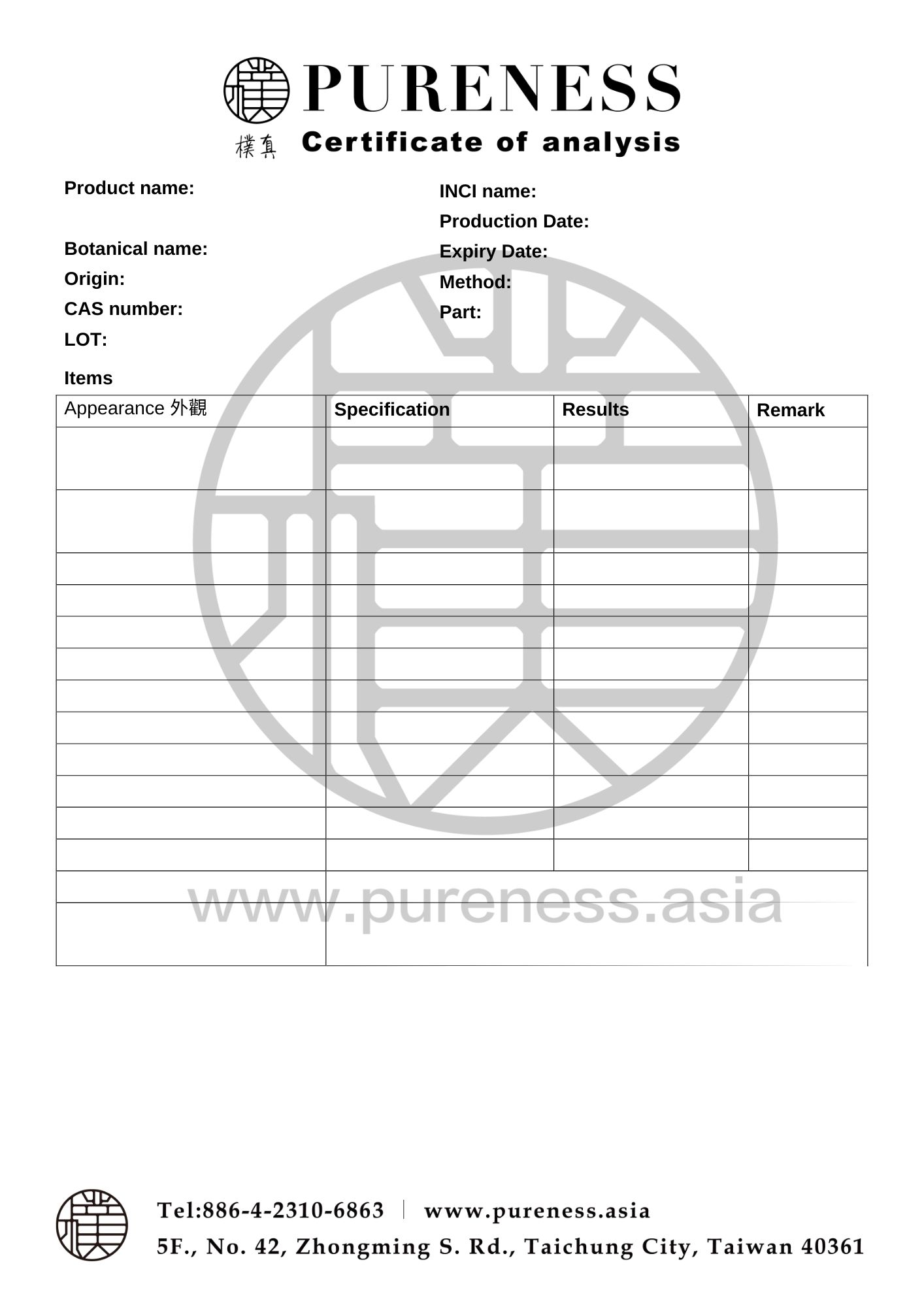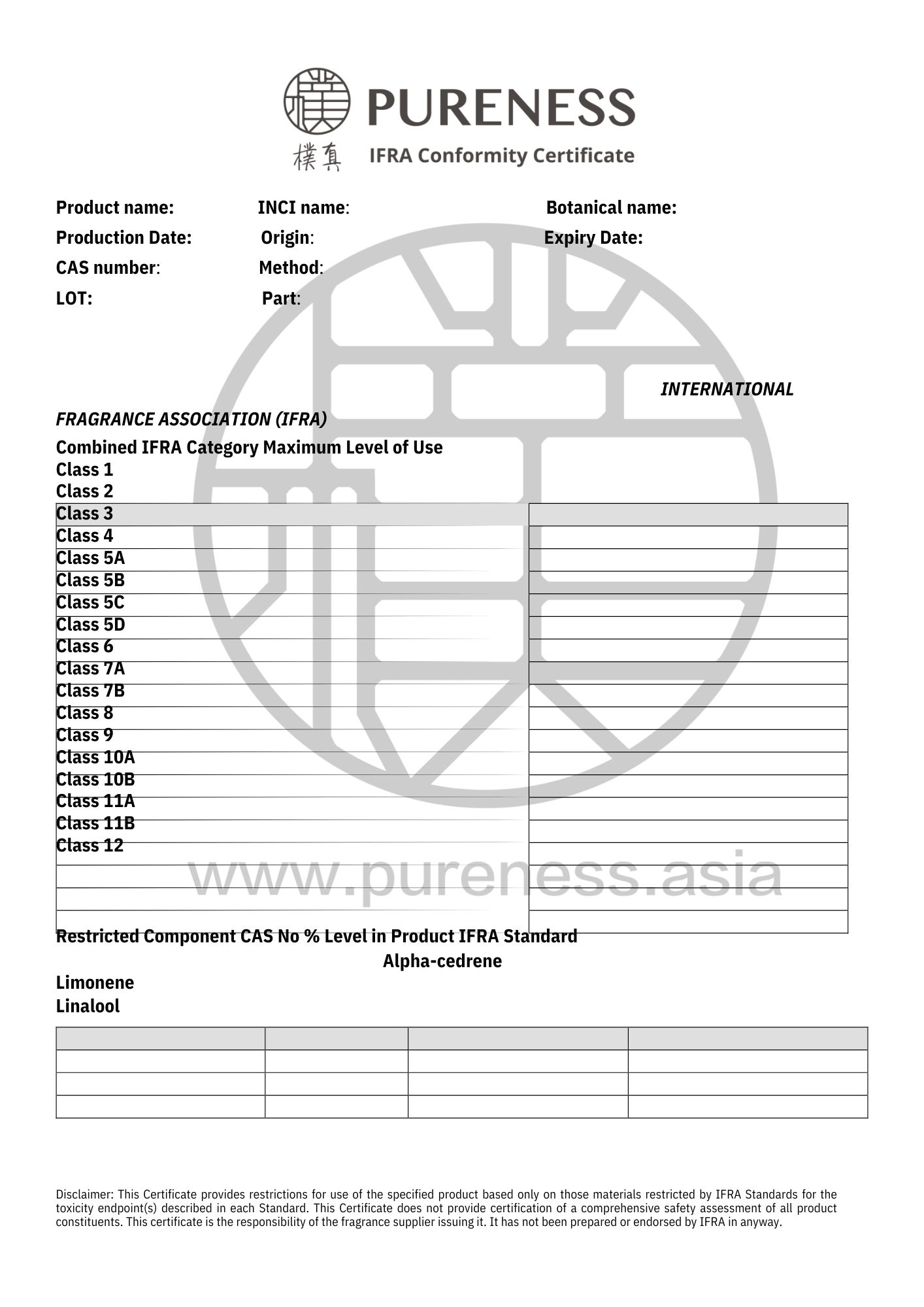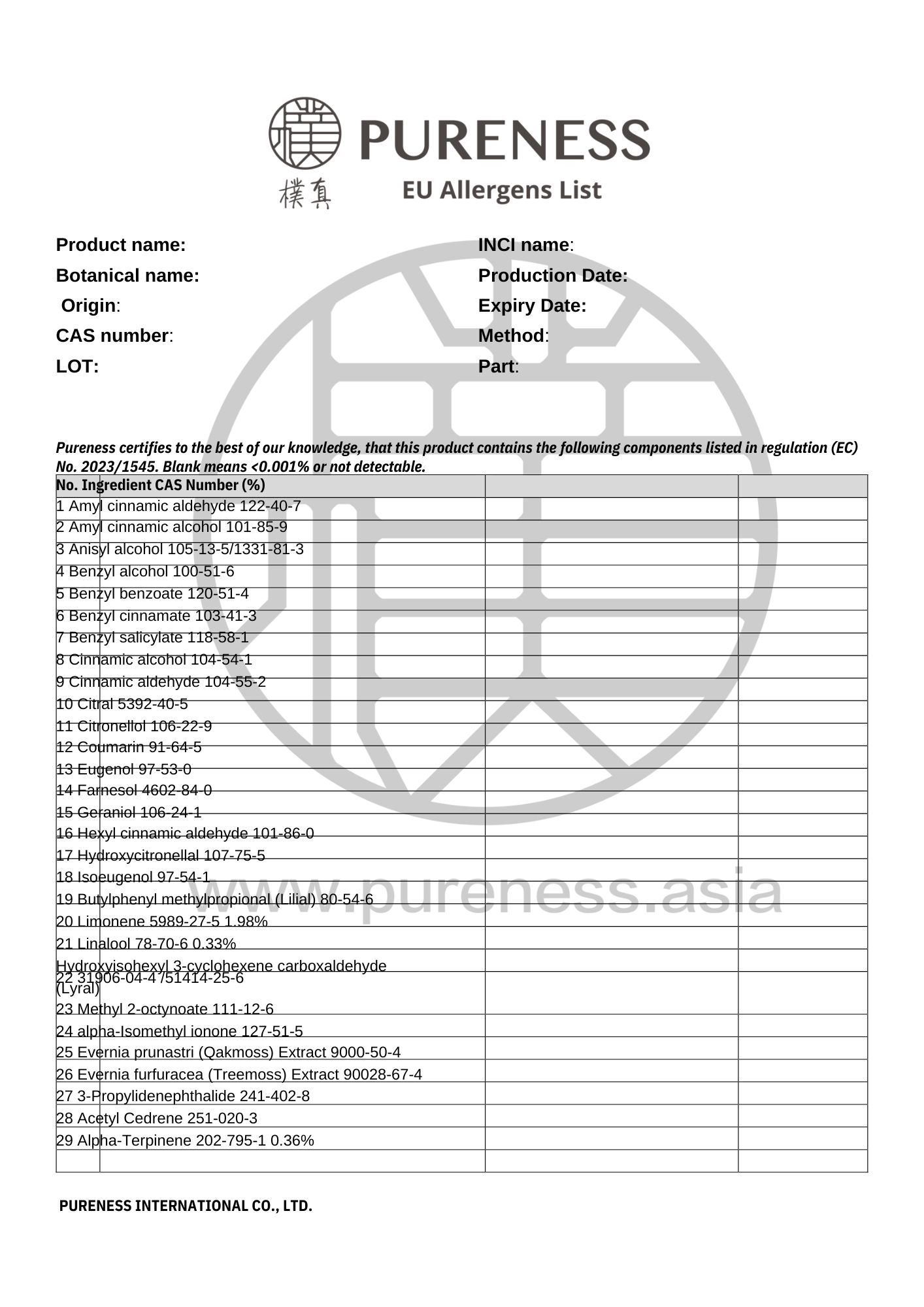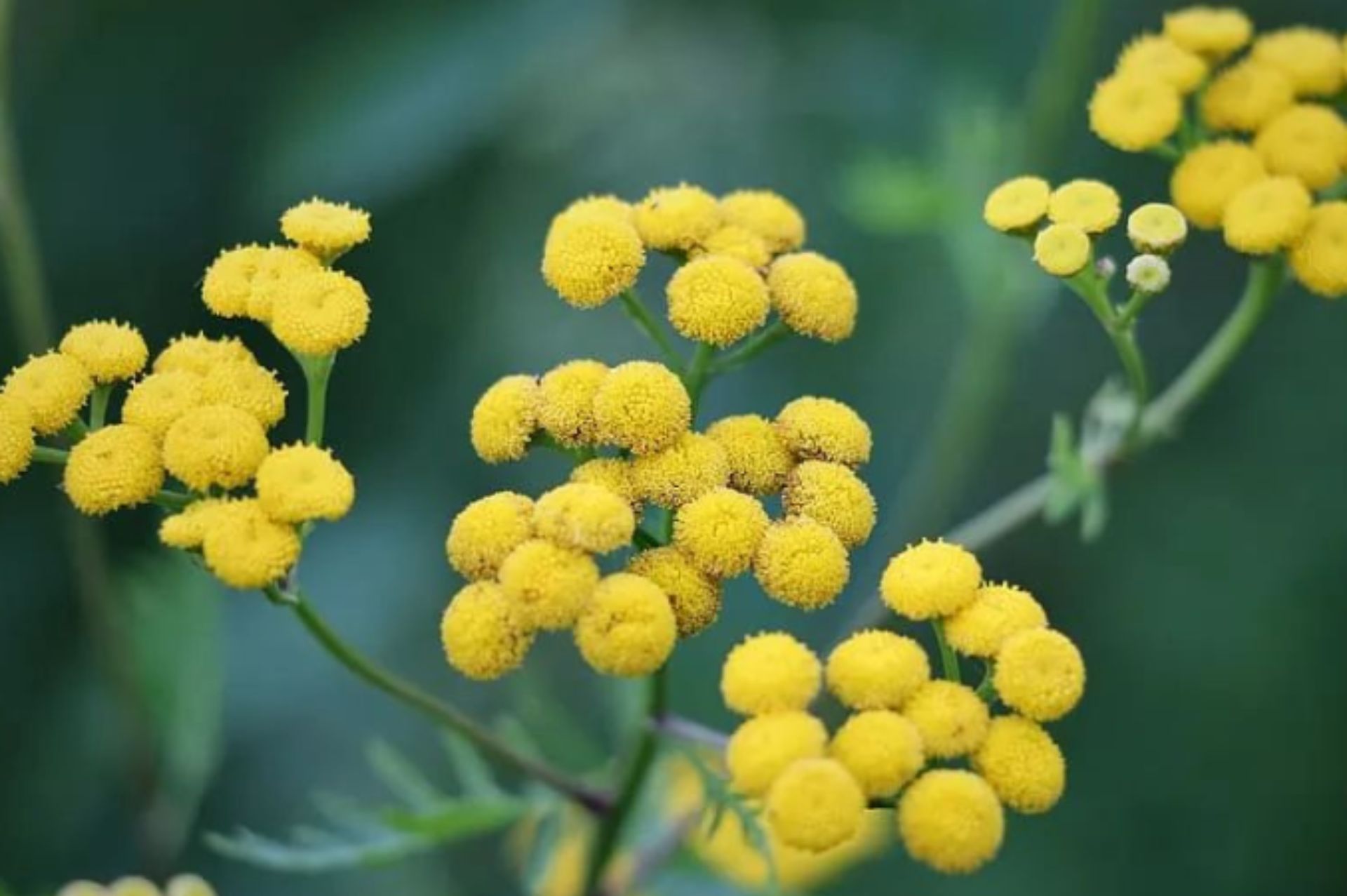
Blue tansy
Scientific name|Tanacetum annum
Origin|Morocco
Classification|Flower series
Specifications|500g-25kg Please contact sales for details
Extraction part|Fruit
Extraction method | Distillation
Plant family|Asteraceae
Aroma|Light and sweet, with a hint of coolness
▎Essential Oil Introduction
Blue Tansy grows along the northern Mediterranean coast of Morocco. The subtropical climate and cool sea breeze create ideal conditions for this plant, making it a unique species native to the region.
Despite its name, Moroccan Blue Tansy isn’t a blue flower but rather a typical yellow-flowered member of the daisy family. This annual herb prefers dry soil and flourishes between June and August, when it blooms most vibrantly. At its peak, Blue Tansy can grow up to knee height, filling the fields with a sweet fragrance.
During the height of the blooming season, the flowers are carefully harvested and immediately distilled to extract their essential oil, preserving the best aromatic compounds. Blue Tansy essential oil is rare, as it has a low yield each year. When the petals are distilled, the heated water causes a chemical reaction in the fragrant molecules, producing a blue substance called chamazulene. This gives the oil its deep blue color, similar to the ocean. Compared to other blue essential oils like German Chamomile or Yarrow, Blue Tansy has a lighter, sweeter scent.
▎Component Analysis
|Main component: Sesquimonoterpene
The main chemical component is azulene, which is distilled and extracted to form chamazulene, as well as other ingredients such as limonene, ketone, and camphor.
|Research Validation

▸ In vitro studies have shown that Sabinene and Chamazulene (the main component of Blue Tansy essential oil) have been researched for their antioxidant properties.

▸ Research has also been conducted on the regulation of matrix metalloproteinases (MMP) and the NF-kβ pathway in both in vitro and in vivo models, relating to inflammation in osteoarthritis.
|Raw Material Certifications
To obtain relevant certification information, please contact us on WhatsApp.
▎References
- Ma D, He J, He D. Chamazulene reverses osteoarthritic inflammation through regulation of matrix metalloproteinases (MMPs) and NF-kbeta pathway in in-vitro and in-vivo models. Biosci Biotechnol Biochem. 2020 Feb;84(2):402-410.
- Wang X, Dong K, Ma Y, Jin Q, Yin S, Wang S. Hepatoprotective effects of chamazulene against alcohol-induced liver damage by alleviation of oxidative stress in rat models. Open Life Sci. 2020 Apr 20;15(1):251-258.
- Russo A, et al. Chamazulene-Rich Artemisia arborescens Essential Oils Affect the Cell Growth of Human Melanoma Cells. Plants (Basel). 2020.
- Querio G, et al. Chamazulene Attenuates ROS Levels in Bovine Aortic Endothelial Cells Exposed to High Glucose Concentrations and Hydrogen Peroxide. Front Physiol. 2018.
- Abdelhameed RM, et al. Separation of bioactive chamazulene from chamomile extract using metal-organic framework. J Pharm Biomed Anal. 2017.
- Capuzzo, A., Occhipinti, A. & Maffei, M. E. Antioxidant and radical scavenging activities of chamazulene. Nat. Prod. Res. 28, 2321–2323 (2014).
- Chemical composition, antibacterial activity and cytotoxicity of essential oils of Tanacetum parthenium in different developmental stages. Mohsenzadeh F, Chehregani A, Amiri H.Pharm Biol. 2011 Sep;49(9):920-6.
- Parada-Turska J, Mitura A, Brzana W, Jabłoński M, Majdan M, Rzeski W. Parthenolide inhibits proliferation of fibroblast-like synoviocytes in vitro. Inflammation. 2008 Aug;31(4):281-5.
- Safayhi, H., Sabieraj, J., Sailer, E. R. & Ammon, H. P. Chamazulene: an antioxidant-type inhibitor of leukotriene B4 formation. Planta Med. 60, 410–413 (1994).
- PENUNURI E, et al. Chamazulene from Artemesia caruthii. J Pharm Sci. 1962.
|Some images sourced from the internet. Contact for copyright removal|
